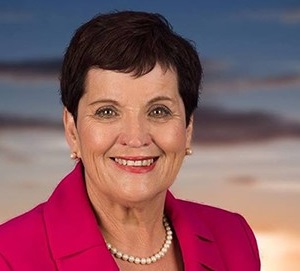A NSW council says it has been left scrambling to find an extra $700,000 after the state government announced it is scrapping Emergency Services Levy subsidies for local government.

Cumberland Council has passed a mayoral minute demanding the NSW government reconsider its decision to stop covering ESL increases for councils, condemning the move as “unacceptable cost shifting”.
The funds raised by the ESL are used to support the work of the NSW Rural Fire Service, the NSW State Emergency Service, and the NSW Fire and Rescue Service, with the levy split three ways.
Insurance companies pay 73.7 per cent of the levy, the state government 14.6 per cent, and local councils 11.7 per cent. Since 2019, ESL annual increases for councils have been covered by the state.
Councils have told Government News the decision came out of the blue and was a shock to many who are already struggling with the impact of a pandemic, high inflation and an impending new award for employees.
In a statement to Government News, a government spokesperson confirmed the decision and said the increase was approved under the previous government.
30 per cent hike
Cumberland Mayor Lisa Lake says Council got a rude shock when it received its annual ESL invoice last week and discovered it will have to stump up an extra $700,000 – a 30 per cent increase on the previous year’s levy and one that will impact Council’s budget surplus position.
“Council had budgeted for $3.2 million in its draft 2023-24 budget for the ESL, but the invoiced amount totals $3.9 million,” the minute says.
“Rather than a 7 per cent annual increase which Council forecast in its budget, Council received a 30 per cent increase from last years levy, totalling a 62 per cent increase from the 2021-22 levy.
“This will leave a budget shortfall of $700,000 for 2023/24 that our rate payers will have to pay for.”
Cumberland has resolved to write to the government opposing the removal of of the ESL subsidy and calling for a review “with a view to implementing a fair, transparent and financially sustainable funding method that does not adversely impact local government”.
Subsidy never guaranteed
The government spokesperson said Labor understood the increasing pressures faced by councils. But as the payments to cap ESL contributions at 2019/20 levels were ad-hoc and never guaranteed, councils should have been budgeting for the full emergency services levy, including any increases, he said.
As the payments to cap ESL contributions at 2019/20 levels was ad-hoc and not budgeted for, ideally, local governments will have been budgeting for the full emergency services levy, including any increases.
NSW government spokesperson
He said the government has committed to implementing a review of financial modelling for councils with a focus on the increasing cost burdens on residents.
“We remain committed to that process,” he said.
Rates increases evaporate
LGNSW says the levy increase represents a collective $77 million increase for for the state’s councils, may of which will see recently approved rate rises evaporate and potentially result in cuts to staff and services.

President Darriea Turley says Hay Shire council will lose 88.6 per cent of an approved rate rise to the levy, while Hay Shire will lose 88.6 per cent, Bourke Shire Council 94 per cent, Yass Valley 96 per cent and Tenterfield 119 per cent.
LGNSW wants to see the subsidy restored and uncoupled from council rates, and the development of a more financially sustainable model.
Flood-hit Western Sydney councils have also expressed dismay over the decision, calling it a catastrophe for the region.
“For some councils, the unexpected cost hit will cripple budgets already under massive pressure from the combined impact of the pandemic, extreme weather events, and high-cost inflation,” WSROC president Barry Calvert said.
“Indeed, if the NSW Government has become so desperate to save money that it is prepared to actually stop funding the NSW Emergency Services Levy, perhaps instead it should divert some of the $800 million annually is collects from the waste levy,” he added.
He said WSROC is calling on the NSW government to refer the financial and funding arrangements between local government and the other two levels of government to the same expert panel that produced the NSW Review of Federal Financial Relations report on the NSW and Commonwealth governments can better work together.





The lord giveth and the lord taketh away … I’m more upset for the people who are responsible enough to take out insurance!!